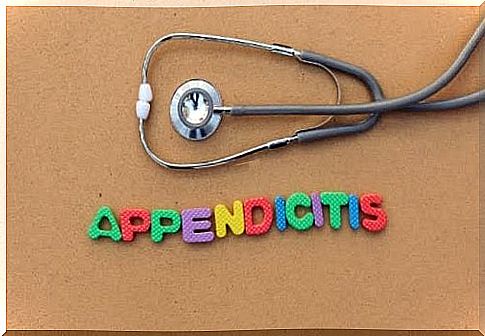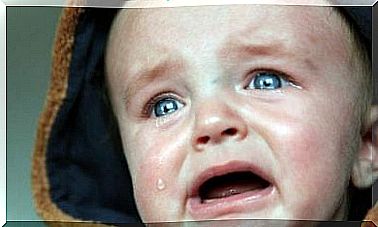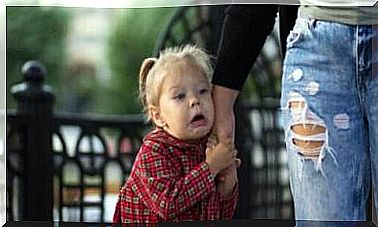Appendicitis In Children: Some Facts

Appendicitis is common in children between the ages of 0 and 4. We’ll dig a little deeper into this in this article. Appendicitis is inflammation of a small organ called the appendix. This is a thin tube about 9 centimeters long that is attached to the large intestine. Science still doesn’t know exactly what its function is. Apparently it has to do with protecting the intestines from infection.
Parents need to know what appendicitis is. Children can be affected by this from birth. Therefore, we must ask ourselves: what causes appendicitis?
The blockage of this duct causes an accumulation of faeces. This damages the wall of this organ, resulting in inflammation and infection.
When this happens, the swelling continues to increase. This causes pain on the right side of the lower abdomen. The pain is experienced in what is called McBurney’s point. This point is important for doctors to make the correct diagnosis.
Sometimes children feel a little better after a period of intense pain. This is not a good sign. After all, it can indicate the onset of peritonitis. This is the inflammation of a membrane that covers most organs in the abdomen. Peritonitis is caused by a perforation of the appendix.
Symptoms Of Appendicitis In Children

Usually, doctors do not immediately diagnose appendicitis. Usually a number of tests have to be done for this. With regard to our little ones, it is important that this protocol is followed. After all, appendicitis can be confused with other intestinal disorders such as intestinal inflammation or a cold.
Here are the main symptoms of appendicitis in children:
- The first symptoms are a mild pain in the upper abdomen or around the navel. This is followed by fever, loss of appetite, diarrhea, constipation and chills.
- After a few hours, the pain will become more intense. In addition, the pain will move to the lower part of the abdomen.
- Naturally, children experiencing these symptoms will not be eager to walk, play or eat. If you see that your child is still in a playful mood, you can worry a little less.
Consult your pediatrician and follow his or her guidelines if you notice any of the above symptoms in your child. If your child experiences extreme pain, you should immediately go to the nearest hospital.
Risk Factors
Acute inflammation of the appendix is the main cause of abdominal surgery in children older than 2 years. This can occur at any age, but children under the age of 2 are only 5% at risk for this condition. However, it most often occurs in boys between the ages of 10 and 12.
What factors can influence the development of appendicitis in children? These are the main risk factors:
- Genetics: The risk is increased if the mother or father has had appendicitis in the past.
- Infections: intestinal inflammation, viral infections, etc.
- Indigestion: A diet lacking in fiber poses a risk to the body.
- Indirect: abdominal trauma.
Treating Appendicitis

Unfortunately, after the diagnosis of appendicitis, there is only one treatment possible. This means that the appendix must be surgically removed. The good news is that medical science is already well advanced. As a result, this is now only a minor operation. Children also recover much faster than adults.
There is also a very small chance that the appendix will look normal during surgery. However, in this case, the doctor will remove the appendix and continue to look for the cause of the abdominal pain.
Regardless of the situation, it is very important that you have faith that your little one is strong and will overcome the problem.
Most children recover very quickly from appendicitis surgery. So you don’t have to worry. Always keep an eye on your little angel’s health and always have your doctor’s phone number handy. After all, emergencies can always occur.









